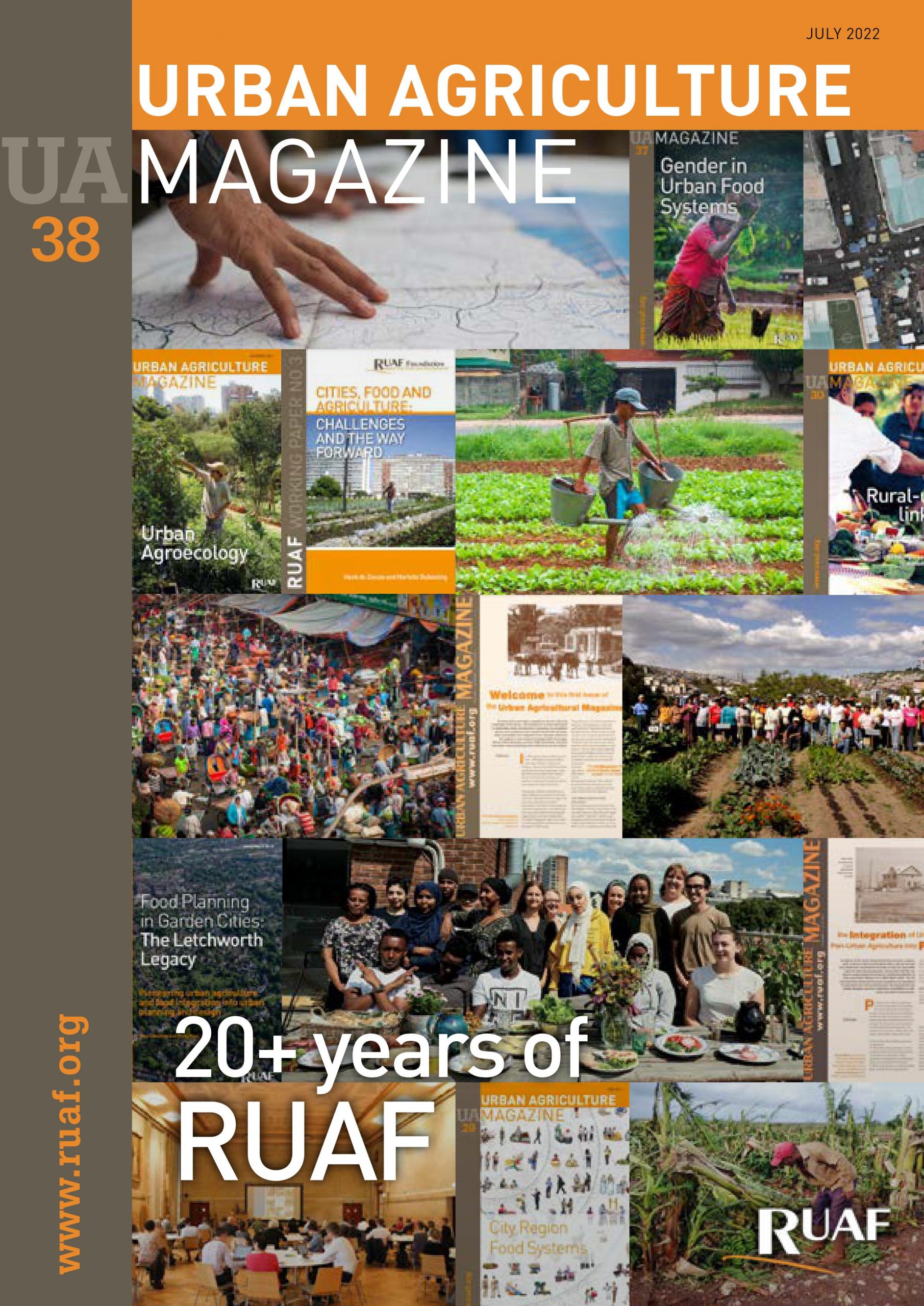The new issue of the Urban Agriculture Magazine analyses five key work areas for the coming decade: Resilience, Social inclusion, Urban and Peri-urban Agriculture, Urban Planning, and Governance.
Resilience
Food systems around the globe are highly vulnerable to the impacts of multiple hazards, including climate shocks, natural events, global warming, and pol itical instability. People, assets and infrastructures are vulnerable throughout food supply chains, from production to consumption and waste management, and the natural resources and ecosystem services on which they depend. This section reflects on the concept of resilience and vulnerabilities of food systems, including in the context of the COVID-19 pandemic. It looks into the experiences from the ground in Antananarivo, Quito, Melbourne and St. Vincent and the Grenadines, drawing some conclusions on the need for sustained, ambitious, and expanded efforts to build urban and city region food system resilience.
Social Inclusion
Social inclusion is the process of improving the opportunities and ability for participation of disadvantaged individuals and groups in society, and improving the terms of engagement. This section discusses the right to food, justice and interventions on inclusion and enhancing agency. It looks at the informal sector and the need to properly understand and collaborate with the food system of the majority. It explores recent and ongoing work to put citizens at the centre of food system changes, reporting on experiences such as food change labs and local food councils. The section also looks at the inclusion of forcibly displaced persons in urban food systems, and the role that urban and peri-urban agriculture (UPA) can play in different circumstances.
Urban and Peri-Urban Agriculture
Over the past few years, Urban and Peri-urban Agriculture (UPA) has gained increasing attention. The disruption of urban food systems during the COVID-19 pandemic has emphasised the importance and added value of (re-)connecting local food production and consumption, and the importance of easy access to healthy and nutritious food. UPA is a shifting form of urban land use while consistently being part of city development, and contributes to food security as a complement to rural farming – as well as bringing other social and environmental benefits. This section analyses urban agroecology, regeneration and circularity, as well as inclusive food value chains in and around cities, and the role and potential of UPA in food systems transformation.
Urban and Regional Food Systems Planning
Climate change and the COVID pandemic highlight the pressing need to rethink and build local supply and food distribution channels. Cities and their hinterlands need to build food sovereignty, and increase accessibility and affordability of nutritious food, especially for the excluded and the poor. Food planning is gradually being considered by cities, but existing knowledge and emerging practices need to be shared and used to train all types of actors involved in, and concerned about, food. This section illustrates some of the solid first steps taken by various actors and cities and explores the way ahead.
Governance
Governance of urban food systems is critical. It is the bedrock on which all policies, projects, programmes and interventions are built. Actions to strengthen or transform urban food systems flourish or fail on the strength of their governance arrangements. This section examines the different meanings of governance. It also provides an overview of urban food governance discussions and draws on examples and best practices from cities in different parts of the world, including Nairobi, Surabaya, Bristol, and Toronto.

